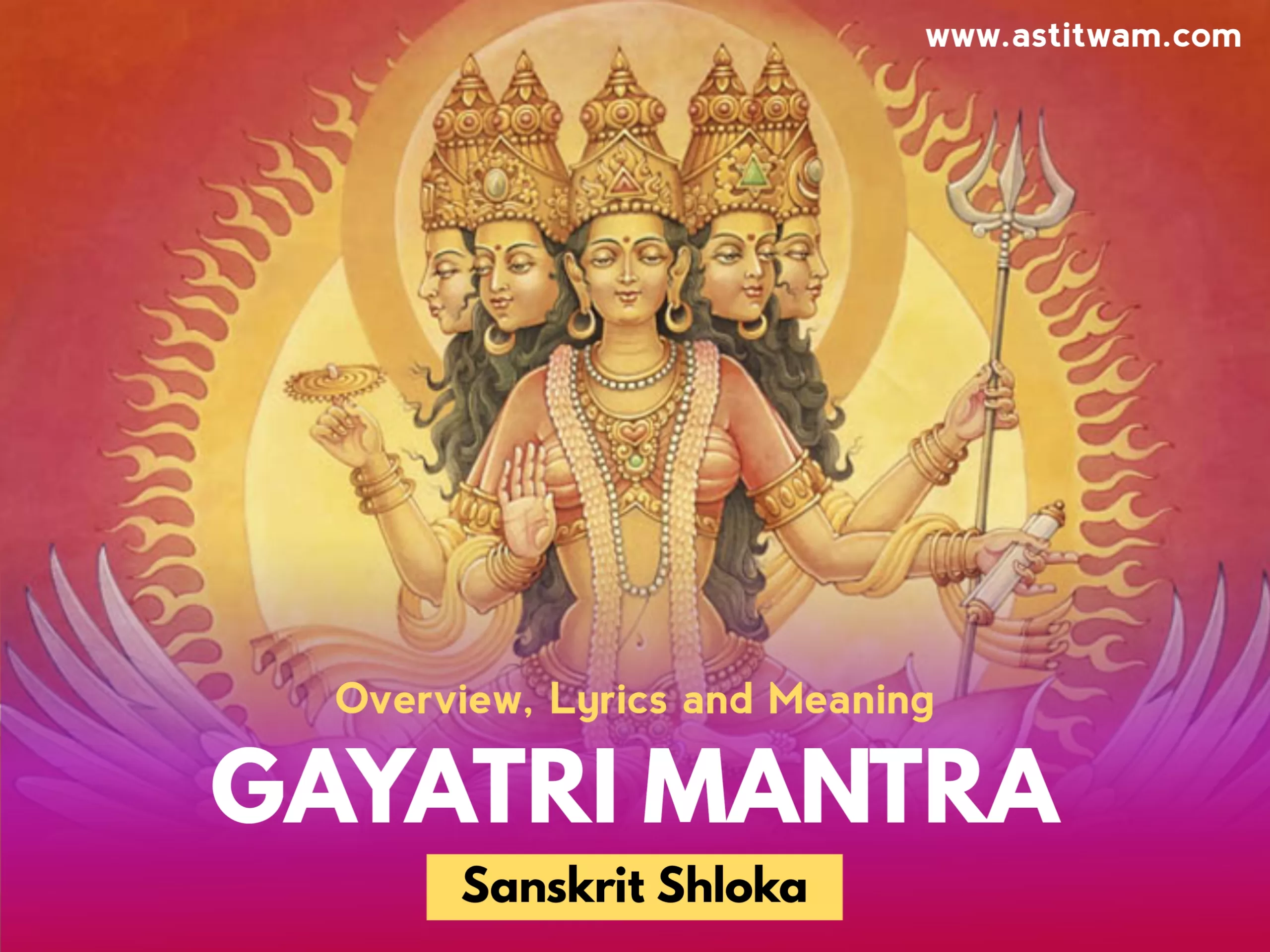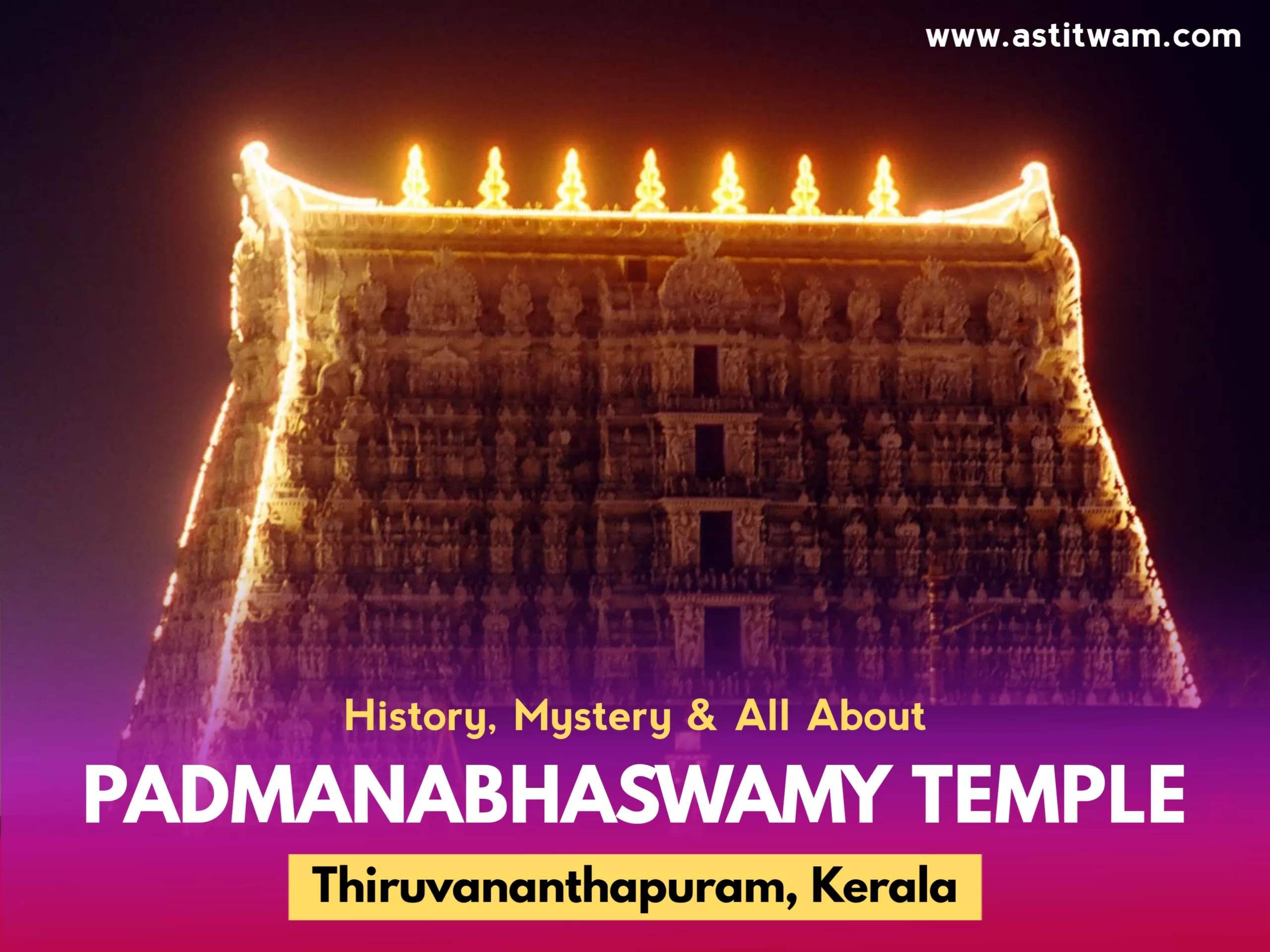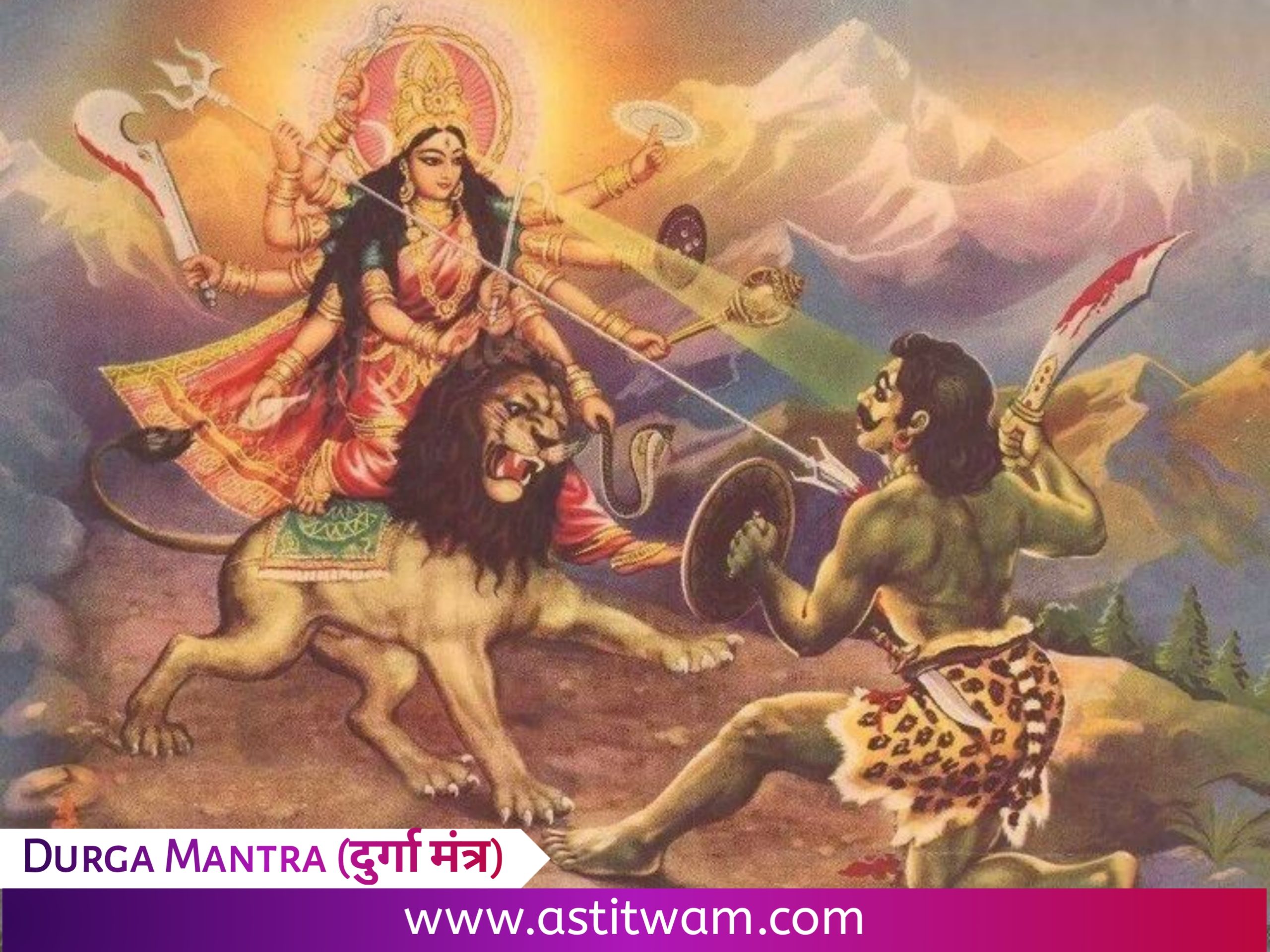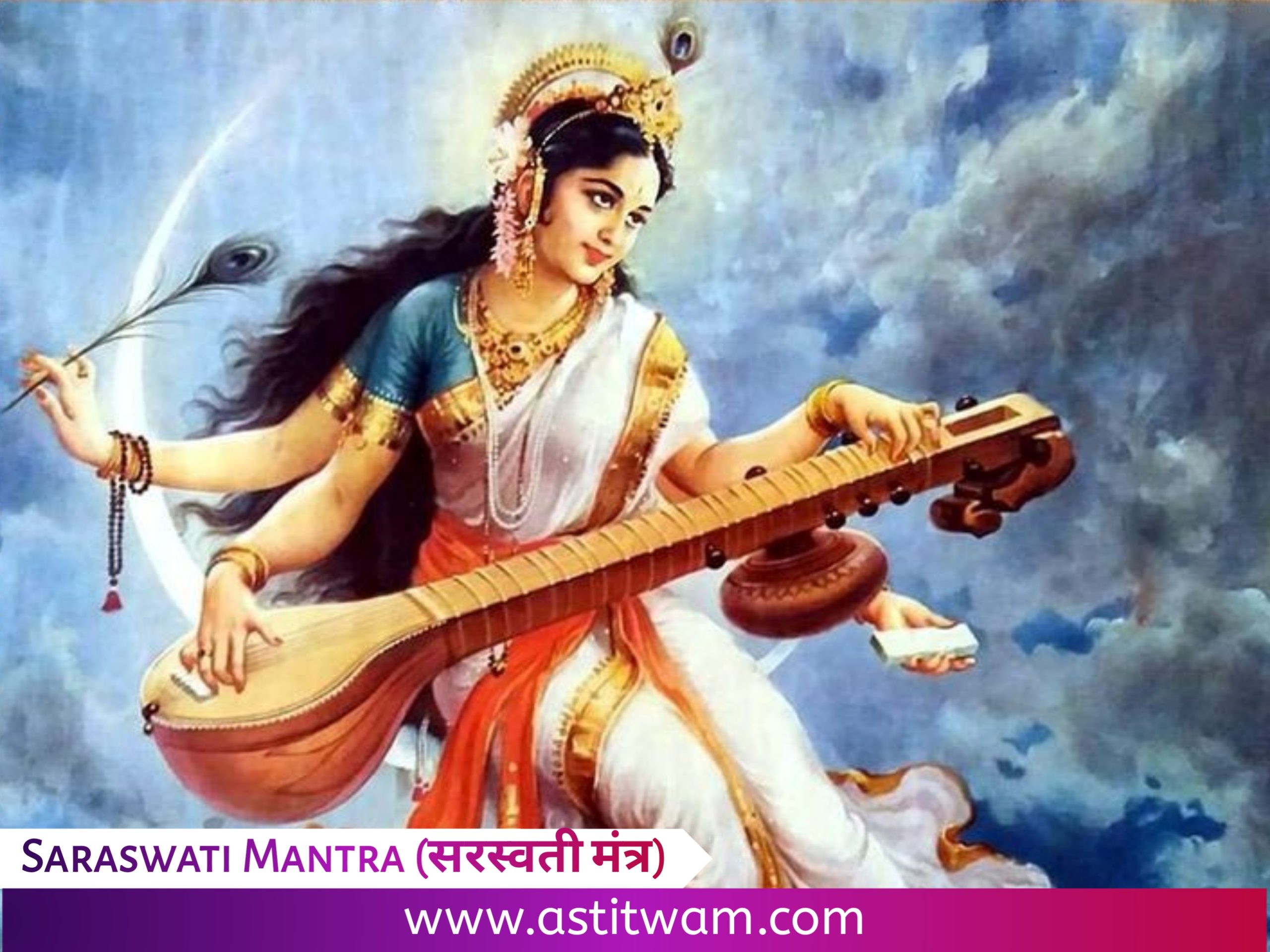Gayatri Mantra

Overview:
The Gayatri Mantra, alternatively known as the Savitri Mantra, holds immense sacred significance originating from the Rig Veda. Dedicated to the Vedic deity Savitr, it is revered as the “Mother of the Vedas.”

Furthermore, the term Gayatri extends to encompass a variety of mantras that adhere to the same Vedic meter as the original. These diverse chants are dedicated to various gods and goddesses while retaining the essence of the Gayatri Mantra Mantra.
The mantra finds mention in numerous Hindu scriptures, including the Śrauta liturgy, Bhagavad Gita, Harivamsa, and Manusmṛiti. Its presence is even noted in the teachings of Buddha. Essential to rituals like upanayana, Hindu reform movements have widely propagated its significance, leading to its widespread adoption and practice among people seeking its profound benefits.
Gayatri Mantra Lyrics:
The primary mantra is found in hymn RV 3.62.10. When chanting it, we begin with oṃ (ॐ) and the phrase bhūr bhuvaḥ svaḥ (भूर् भुवः स्वः), also known as the mahāvyāhṛti, or “great utterance.” This tradition is detailed in the Taittiriya Aranyaka (2.11.1-8), which instructs us to recite it with oṃ followed by the three Vyahrtis and the Gayatri verse.
While the gāyatrī mantra ideally consists of three sections, each with eight syllables, the version in the Samhita has one shorter section, comprising only seven instead of eight. Scholars suggest amending the tri-syllabic vareṇyaṃ to the tetra-syllabic vareṇiyaṃ to rectify this.
The Gayatri Mantra Lyrics with svaras is written in Devanagari script as:
ॐ भूर्भुव॒ स्सुवः॑
तत्स॑ वि॒तुर्वरे᳚ण्यं॒
भर्गो॑ दे॒वस्य॑ धीमहि
धियो॒ यो नः॑ प्रचो॒दया᳚त् ॥In IAST:oṃ bhūr bhuvaḥ suvaḥtat
savitur vareṇyaṃ
bhargo devasya dhīmahi
dhiyo yo naḥ pracodayāt
– Rigveda 3.62.10
Gayatri Mantra In Hindi:
ॐ के उच्चारण में ही तीनो शक्तियों का समावेश हैं । हे माँ भगवती जिसने सभी शक्तियों का सर्जन किया ऐसी प्राणदायिनी, दुःख हरणी, सुख करणी, समस्त रोगों का निवारण करने वाली, प्रज्ञावान माँ भगवती जो सभी देवों की देवी हैं उसकी में उपासना करती हूँ जिसने मुझे संरक्षण दिया और सभी प्रकार के ज्ञान से समृद्ध बनाया ।
Gayatri Mantra Meaning:
Gayatri Mantra In English:
In simpler terms, this mantra can be understood as:
“Let us meditate on the splendid radiance of the divine Sun, May he illuminate our intellect.”
- Om – The sacred syllable, pranava;
- Bhur – Bhuloka (physical plane);
- Bhuvah – Antariksha (space);
- Suvah – Svarga (Heaven);
- Tat – Paramatma (Supreme Soul);
- Savitur – Ishvara (Surya) (Sun god);
- Varenyam – Fit to be worshipped;
- Bhargo – Remover of sins and ignorance;
- Devasya – Glory (Jnana Svarupa i.e. feminine/female);
- Dhimahi – We meditate;
- Dhiyo – Buddhi (Intellect);
- Yo – Which;
- Nah – Our;
- Prachodayat: Enlighten/inspire.
Gayatri Mantra In Hindu Literatue:
In Hindu literature, the Gayatri mantra holds significant prominence and is frequently referenced across various texts. It appears prominently in the mantra compilations of the Śrauta liturgy and is reiterated multiple times in the Brahmanams and the Srauta-sutras. Additionally, it finds mention in numerous grhyasutras, particularly about the upanayana ceremony, where its importance is emphasized.
Moreover, the Gayatri mantra is subject to detailed analysis and interpretation in major Upanishads such as the Brihadaranyaka Upanishad, the Shvetashvatara Upanishad, and the Maitrayaniya Upanishad. It is also discussed in other renowned works like the Jaiminiya Upanishad Brahmana and appears in minor Upanishads like the Surya Upanishad.
Furthermore, the Gayatri mantra serves as inspiration for derivative verses known as “gāyatrīs,” which are dedicated to various deities. These derivative stanzas, following the pattern of vidmahe – dhīmahi – pracodayāt, are incorporated into certain versions of the Shatarudriya litany and are also present in the Mahanarayana Upanishad.
Additionally, the Gayatri mantra is widely recited and referenced in Hindu texts such as the Mahabharata, Harivamsa, and Manusmṛti, showcasing its enduring significance in Hindu spirituality and philosophy.
Upanayana Ceremony:
In Hindu tradition, the upanayana ceremony holds great significance, marking the commencement of Vedic studies and the bestowing of the Gayatri mantra upon young Hindu men. Often referred to as “Gayatri diksha,” this initiation into the Gayatri mantra is described by Sarvepalli Radhakrishnan as the essence of the ceremony. However, traditionally, the stanza RV.3.62.10 is exclusively imparted to Brahmanas. For individuals of other varnas, different Gayatri verses are used: RV.1.35.2, in the tristubh meter, for a kshatriya, and either RV.1.35.9 or RV.4.40.5 in the jagati meter for a Vaishya.
Mantra-Recitation:
Gayatri japa serves as a means of prāyaścitta (atonement). Practitioners believe that chanting the mantra grants wisdom and enlightenment, facilitated by the Sun (Savitr), symbolizing the origin and inspiration of the universe.
Hindu Revivalism:
In the later part of the 19th century, Hindu reform movements began promoting the chanting of the Gayatri mantra.

Swami Vivekananda, for instance, emphasized the importance of learning from a Guru rather than birth status for attaining Brahmanahood, administering the sacred thread ceremony and Gayatri mantra to non-Brahmins in the Ramakrishna Mission. This Hindu mantra gained popularity among the masses through pendants, audio recordings, and mock scrolls. Additionally, various Gayatri yajñas organized by the All World Gayatri Pariwar in the late 20th century further contributed to spreading the Gayatri mantra to a broader audience.
Indonesian Hinduism:
The Gayatri Mantra holds a significant place in the Trisandhyā Puja, a prayer observed by Balinese Hindus and many Hindus in Indonesia. It comprises seven sections, with the Gayatri Mantra being the first. Uttered three times daily—morning, noon, and evening—at 6 am, noon, and 6 pm respectively, this prayer is an integral aspect of Indonesian Hindu religious practice.




